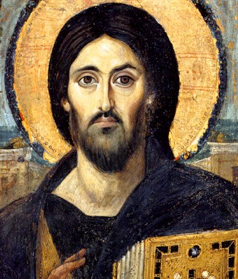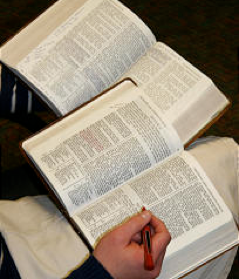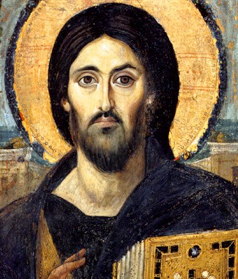|
Jesus and the Study of Scripture
Jesus studied the scriptures of his time, and knew them deeply. On several occasions in the Bible he quotes them outright, or makes comments upon them. For instance, in the chapters in Matthew referred to as the Sermon on the Mount (chapters 5-7), Jesus quotes from the books of Deuteronomy, Exodus and Leviticus – three of the books of the Torah. At another point, he disputes with other religious leaders and scholars of his time, the Pharisees, Sadducees and scribes, about their interpretations and application of various points of religious law, which was contained both in the written scriptures of his time as well as the oral interpretations of that law. It is in the nature of Scripture that it bonds a group of people in a shared experience and understanding of God, and what it means to be the people of God, however that may defined by that group. The Scriptures become that common touchstone that helps to mediate differences, which provides a common language for morality and disciplined living, and describes the means by which we may gain access to mystery. Jesus studied the Scriptures of his time because they were the spiritual teachings and proclamations of his people, and they gave witness to the One he called Abba, “Father.” |
The Spiritual Disciplines of Jesus |
Prayer and the study of Scripture and other Christian writings have been central to Christian spirituality from the very beginnings. The development of monasticism in the East at first and then in the West was a means whereby individual Christians could devote their lives to prayer, study and the practice of Christian virtues. Different communities of monastics adopted practices that varied somewhat, but prayer and study remained central.
Over time, a pattern of prayer and study developed which came to be known as Lectio Divina, or, roughly translated, "Divine Reading." Lectio is mentioned as far back as the Rule of St. Benedict in the late 5th, early 6th Century. Benedict stressed that the monastery was "a school for the Lord's Service," and as such the three fundamental virtues of a monk were obedience, the practice of silence, and humility. "In order to attain his goal as a contemplative, the monk must devote himself to three daily activities: liturgical prayer, Lectio and some type of labor."
Although the description varies somewhat, the tradition of Lectio consists primarily of four elements or stages. The first stage is Oratio or reading of the text. The primary text for Lectio is, of course, Holy Scripture. However, other writings of high spiritual value have been suggested over the centuries, and in reality, any text can be read according to the practice of Lectio. The reading of the text provides the content and focus of the prayer and meditation that follow.
The second stage is to move from reading into what is called meditatio, which consists of concentrating and focusing one's thoughts upon the reading.
The third stage is appropriately called ruminatio, which is basically what it sounds like. During ruminatio, one sits with the text, "chewing" on it and "digesting" it, in effect. One keeps the text fixed in the consciousness, allowing new insight to arise out of the encounter with this particular Word of God. Ruminatio often involves discursive, almost conversational prayer.
The final stage is contemplatio, which is to sit in silence as in the Presence of God. This final stage is an example of transcendent relationality in which the limits and boundaries fall away and being addresses being in an experience of overwhelming love.
Spiritual reading is a way to read scripture in a way that speaks deeply to heart and soul. Another way to understand and practice the Spiritual Reading which is Lectio Divina, is to think of it as four steps, each beginning with the letter “R”: Recitation, Reflection, Rumination and Resting. Begin by setting aside uninterrupted time for this. Settle yourself down in an attitude of prayer and openness. Offer the time to God. Ask for the Holy Spirit to speak to you through the words of scripture. Then proceed with the following steps:
- Recitation. In this step, you read the scripture text. It is often best to read it aloud. Reading it aloud impresses upon you the fact that it is through this text that God is endeavoring to speak to you, and to provide the spiritual building materials for your new life. Do not read a lot. Concentrate on just a few verses at a time. Repeat the recitation if you wish.
- Reflection. In this step, you focus your thoughts upon the reading. What are the words used? What is said? How does it sound to your ears? What are the images it provides?
- Rumination. This step is just what it sounds like: chewing upon the text. This is a form of prayer in which you turn the words over in your mind again and again and allow them to speak to the deepest yearnings and questions of your heart. What questions or challenges arise for you? What resistance do you encounter? Let a conversation emerge within you between the text and your own inner voices. Offer the conversation at all times to God.
- Resting. Finally, at the end of each period of spiritual reading, sit in silence as if in the presence of God. Sit as one who is greatly beloved of God. Sit as a child in the presence of the most loving parent you can imagine. Do not seek to do anything or change anything. Simply be. Allow God to be with you as well. Close out the time with a simple prayer of thanksgiving, or you may use the following prayer:
Prayer
O God, search me and try me.
You know the desires of my heart, and the chains upon my feet.
You know what has shaped and molded me, and for what purposes.
You are the true potter, I am the clay.
Remold me, remake me, fit me for your Way.
Amen.
O God, search me and try me.
You know the desires of my heart, and the chains upon my feet.
You know what has shaped and molded me, and for what purposes.
You are the true potter, I am the clay.
Remold me, remake me, fit me for your Way.
Amen.
Session 36 JP21 Via Vida: The Way of Study of Scripture
Session Outline:
- Regather, greet
- Practice Centering Prayer
- Scripture Study: Psalm 119:1-16 and Matthew 7:15-29
- What image or phrases caught your attention?
- What was most puzzling?
- What would you like to learn more about?
- What really spoke to your heart?
- View video for Session 36.
- Read “The Way of the Study of Scripture” and discuss using the discussion questions provided.
- Close in prayer.
Next Practice: Acts of Charity
Click on the images below to read about JP21-BiggerMind; JP21-Bigger Heart; JP21-Bigger World; JP21-Bigger Life; JP21-Way of Ways.
Click on the images below to read about JP21-BiggerMind; JP21-Bigger Heart; JP21-Bigger World; JP21-Bigger Life; JP21-Way of Ways.
Proudly powered by Weebly










